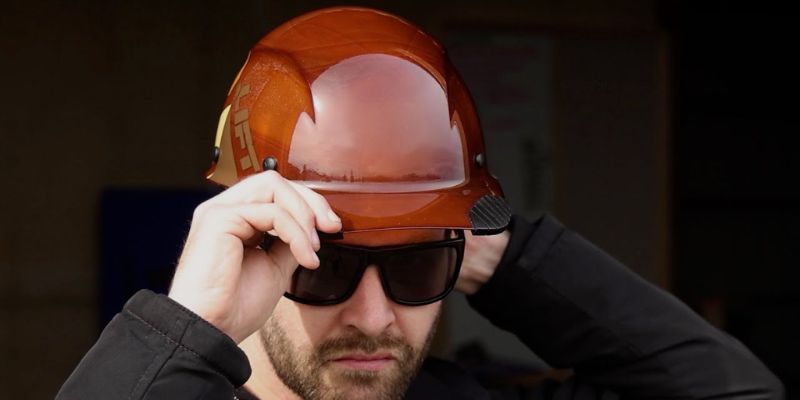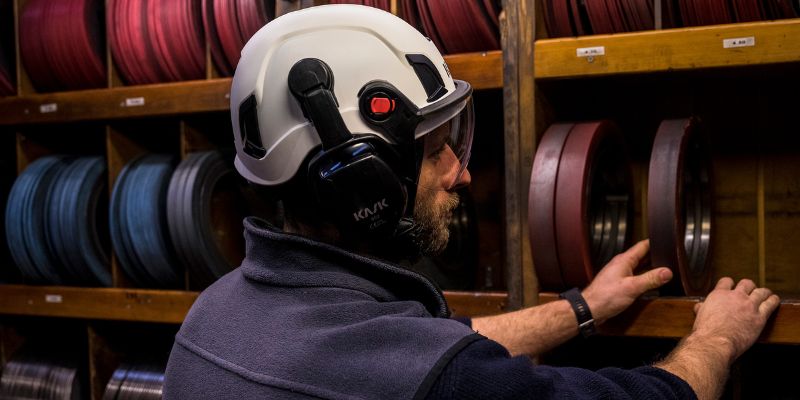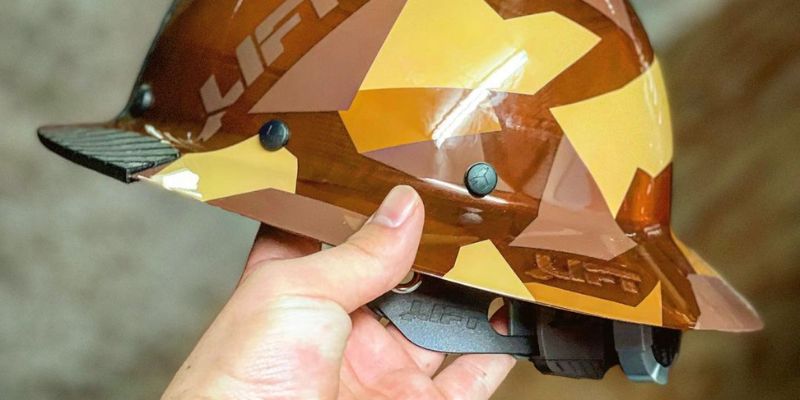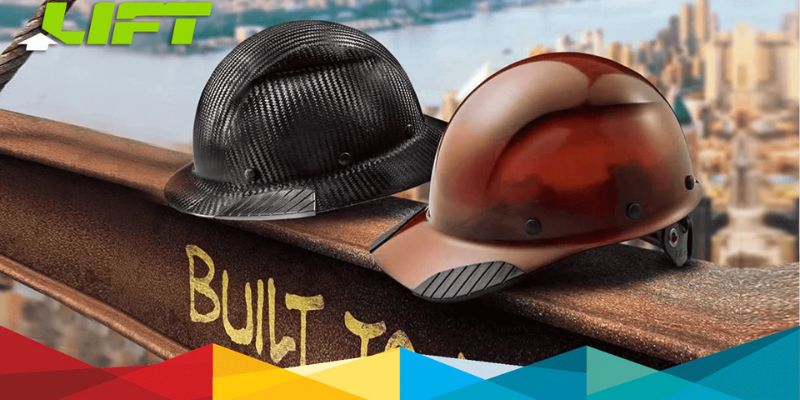Hard hats are a fundamental piece of personal protective equipment (PPE) in many industries, providing essential protection against head injuries caused by falling objects, electrical hazards, or impacts. However, simply owning a hard hat isn't enough; knowing how to wear it correctly is vital for ensuring maximum safety. This guide will cover everything you need to know about how to wear a hard hat properly, including the right fit, positioning, maintenance, and common mistakes to avoid.

The Importance of Wearing a Hard Hat Correctly
Wearing a hard hat properly can be the difference between a minor injury and a life-threatening one. Hard hats are designed to absorb impact and protect the skull from serious injuries. However, if worn incorrectly, their effectiveness is drastically reduced. Proper fit and placement ensure that the energy from an impact is evenly distributed across the hat's surface, minimizing the risk of injury.
Choosing the Right Hard Hat
Before focusing on how to wear a hard hat, it's important to choose the right one for your specific job. Hard hats come in different classes and types, designed for various hazards:
- Class G (General): Protects against impacts and low-voltage electrical conductors (up to 2,200 volts).
- Class E (Electrical): Offers protection against high-voltage electrical conductors (up to 20,000 volts).
- Class C (Conductive): Does not provide electrical protection but is lighter and often has better ventilation.
Make sure to select a hard hat that meets the specific safety requirements of your workplace.

How to Properly Wear a Hard Hat
1. Positioning the Hard Hat
The correct positioning of the hard hat on your head is crucial:
- Centering: Place the hard hat squarely on your head, covering the top of your skull and sitting approximately 1 to 1.5 inches above your eyebrows.
- Level Fit: The hard hat should sit level on your head, not tilted forward, backward, or to the side. A level fit ensures that the entire surface area of the hat can absorb impact.
- Facing Forward: Always wear the hard hat with the brim facing forward unless the hat's design specifically allows for reverse wear. The brim is designed to shield your face from debris, sunlight, or rain, adding an extra layer of protection.
2. Adjusting the Suspension System
The suspension system inside the hard hat is what keeps it securely on your head and absorbs impact. Here's how to adjust it properly:
- Headband Adjustment: Most hard hats have a headband that can be adjusted to fit the circumference of your head. Ensure that the headband fits snugly but not too tight. A snug fit prevents the hard hat from slipping or shifting while you work.
- Height Adjustment: The suspension system often includes height adjustments. Adjust the height so that the hard hat sits comfortably on your head without pressing down too hard or sitting too high.
3. Ensuring a Secure Fit
Once the suspension system is adjusted, check the fit:
- Movement Test: Shake your head gently from side to side and up and down. The hard hat should remain secure and not wobble or slide off.
- Chin Strap: In environments where there is a risk of the hard hat falling off, use a chin strap for added security. The chin strap should be snug but comfortable, ensuring the hard hat stays in place without causing discomfort.

Common Mistakes to Avoid
Even with the best intentions, it's easy to make mistakes when wearing a hard hat. Here are some common errors and how to avoid them:
- Wearing It Backwards: Unless specifically designed for reverse wear, never wear your hard hat backwards. This reduces its effectiveness and might void its certification.
- Modifying the Hard Hat: Drilling holes, painting, or attaching unauthorized accessories can weaken the hard hat and compromise its protective qualities.
- Ignoring Damage: Cracks, dents, or wear in the hard hat or suspension system are signs that it needs to be replaced. Regularly inspect your hard hat and replace it immediately if any damage is found.
- Wearing It Too Loose or Too Tight: A hard hat that is too loose can fall off, while one that is too tight can cause discomfort and headaches, leading to distractions and reduced focus on the job.
Maintaining Your Hard Hat
Proper maintenance is key to ensuring your hard hat continues to provide optimal protection:
- Regular Cleaning: Clean your hard hat regularly with mild soap and water. Avoid harsh chemicals that can degrade the material.
- Inspecting for Wear and Tear: Regularly check the shell and suspension system for cracks, dents, or other signs of wear.
- Storing Properly: Store your hard hat in a cool, dry place away from direct sunlight and chemicals. Avoid leaving it on the dashboard of your car, as heat and UV rays can degrade the plastic.
- Replacing the Suspension System: The suspension system typically needs replacement before the hard hat itself. Follow the manufacturer's guidelines for replacement intervals.

When to Replace Your Hard Hat
Even with proper care, hard hats have a limited lifespan. Most manufacturers recommend replacing a hard hat every 2-5 years, depending on usage and exposure to harsh conditions. The suspension system should be replaced more frequently, usually every 12 months.
Additionally, replace your hard hat immediately if it has been involved in an impact, shows signs of cracking or brittleness, or has been exposed to chemicals or extreme conditions that could weaken the material.
Conclusion
Wearing a hard hat correctly is essential for ensuring your safety in hazardous environments. By choosing the right hard hat, positioning it correctly, adjusting the suspension system, and maintaining it properly, you can maximize its protective benefits. Avoid common mistakes and regularly inspect and replace your hard hat as needed to ensure it remains an effective piece of PPE.
By following these best practices, you can help protect yourself from serious head injuries and maintain a safe working environment.
Recent Posts
-
MSA ALTAIR 4XR vs. MSA ALTAIR io 4: In-Depth Comparison
When it comes to personal gas detection in hazardous environments, the MSA ALTAIR 4XR and MSA A …Nov 01, 2024 -
How to Read a Hard Hat Expiration Date
Understanding the expiration date of a hard hat is critical for ensuring workplace safety. Hard …Jul 26, 2024 -
How to Wear a Hard Hat: A Complete Guide for Maximum Safety
Hard hats are a fundamental piece of personal protective equipment (PPE) in many industries, providi …Jul 23, 2024

